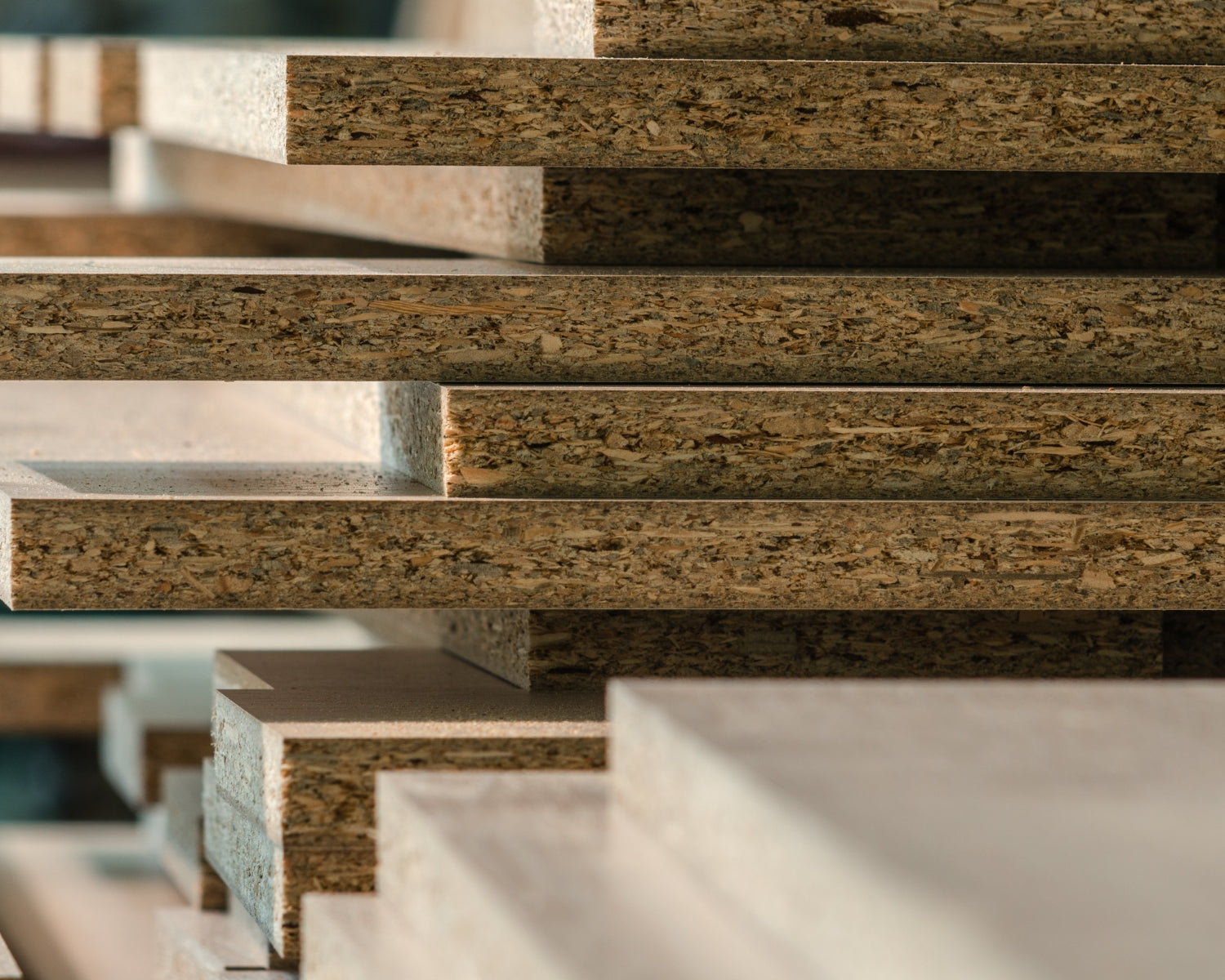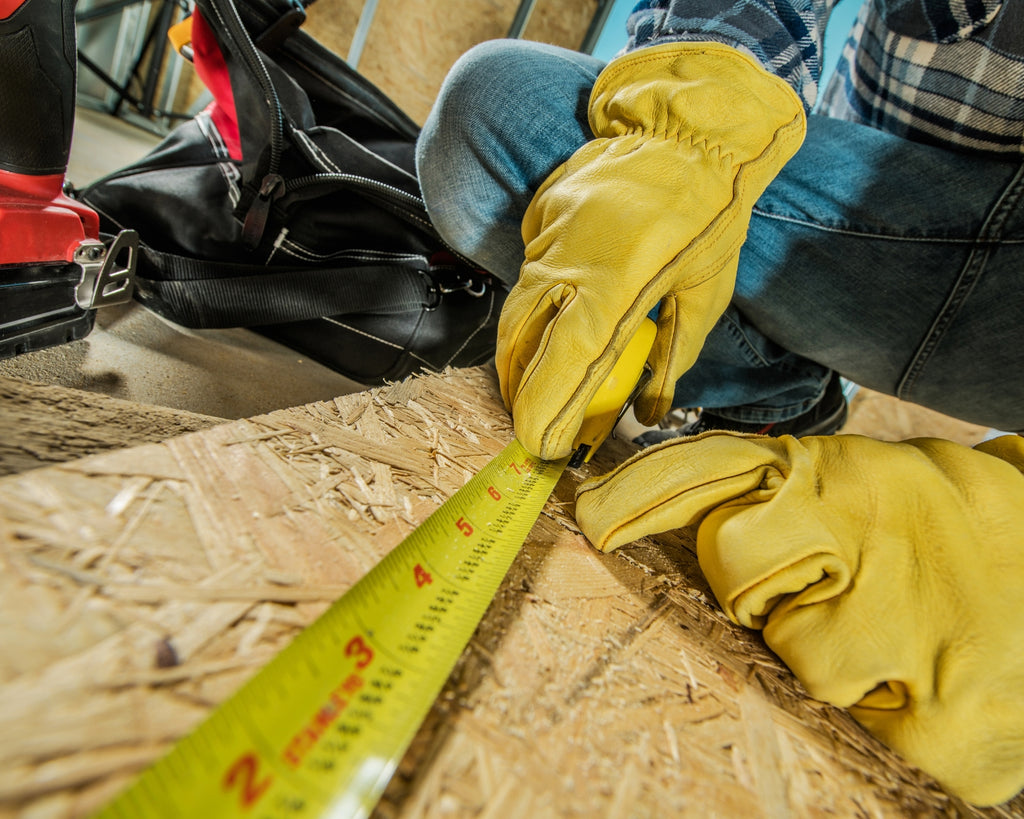
Versatility and Strength: A Guide to OSB Board Uses and Benefits
As you explore the world of construction materials, you'll likely come across Oriented Strand Board (OSB) - a versatile and cost-effective solution for various projects. You might be wondering, what makes OSB boards so popular among builders and contractors? It's their unique combination of durability, water resistance, and ease of installation that sets them apart. But that's just the beginning. From load-bearing applications to creative furniture designs, the possibilities are endless. You're probably curious about the full range of benefits and uses - and that's exactly what we're about to uncover.

OSB Board Construction Benefits
When building with OSB boards, you'll reap numerous construction benefits, including reduced labor costs and increased structural integrity.
One significant advantage is that OSB boards can be used as a subfloor, providing a solid foundation for your construction project.
This is because OSB is an engineered wood product that's specifically designed to withstand heavy loads and harsh environmental conditions.
As a result, you can sheathe your walls and roof with confidence, knowing that your structure will be able to withstand the elements.
Additionally, OSB boards are less prone to warping and shrinking than traditional plywood, which means you'll experience fewer callbacks and warranty claims.
This, in turn, will save you time and money in the long run.
By choosing OSB boards, you'll be able to construct a strong, durable, and long-lasting building that will meet your needs for years to come.
With their numerous benefits, it's no wonder OSB boards are becoming the go-to choice for builders and contractors.
Cost-Effective Alternative to Plywood
As you explore the benefits of OSB boards, you'll find that they offer a cost-effective alternative to traditional plywood, allowing you to achieve the same results without breaking the bank.
This is because oriented strand board (OSB) panels are engineered to provide similar performance to plywood at a lower cost.
One of the main reasons for this cost-effectiveness is the manufacturing process, which involves compressing strands of wood in a specific orientation to create a strong and durable panel.
This process is more efficient than traditional plywood production, resulting in significant cost savings.
Additionally, OSB boards are often made from fast-growing, sustainable trees, which reduces the environmental impact of your project.
When compared to plywood, OSB boards offer similar strength, stability, and durability, making them an excellent alternative for many applications.
Wall and Floor Installation
OSB boards are a versatile option for wall and floor installation, where their durability and strength make them an ideal choice for constructing walls, flooring, and even roof decking.
When it comes to floor installation, OSB sheathing provides a solid base for your flooring material, whether it's hardwood, carpet, or tile. As a subfloor, OSB boards offer excellent dimensional stability and can withstand heavy foot traffic.
For wall construction, OSB boards are a popular choice due to their cost-effectiveness and ease of installation. They can be used as an exterior wall sheathing, providing a nailing surface for exterior finishes like siding or stucco. Additionally, OSB boards can be used as an interior wall panel, offering a smooth surface for finishing with drywall or paneling.
When using OSB boards for wall and floor installation, selecting the right type of board for the job is crucial. Look for T&G (tongue-and-groove) boards, which provide a secure and tight fit between panels. By following proper installation guidelines and using the right type of OSB board, you can guarantee a strong and durable wall or floor that will last for years to come.
Furniture and Decorative Uses
OSB boards' versatility extends beyond construction, and their unique texture and natural beauty make them an attractive material for creating one-of-a-kind furniture pieces and decorative accents.
You can use OSB to manufacture wooden furniture that's both functional and visually appealing. The natural texture of the OSB adds a touch of rustic charm to any piece, making it a great choice for those who love the industrial or farmhouse style.
When working with OSB for furniture, you'll need to use a strong adhesive to secure the pieces firmly together. You can also combine OSB with other types of wood, like pine, to create a unique and eye-catching design.
One of the benefits of using OSB for furniture is that it's often more affordable than solid wood, making it a great option for those on a budget. With a little creativity, you can create stunning pieces of furniture that showcase the natural beauty of OSB.
Whether you're making a coffee table, bookshelf, or decorative wall art, OSB is a versatile material that's sure to impress.

Durability and Moisture Resistance
One of the most significant advantages of using OSB boards is that they're engineered to withstand harsh environmental conditions, including high humidity and moisture exposure.
This makes them ideal for projects that involve exposure to the elements or high-moisture areas, such as bathrooms or kitchens. You can trust that your OSB panels will remain durable and resistant to water damage.
The secret to OSB's moisture resistance lies in its manufacturing process. The wood strands are bonded together with a waterproof resin that prevents water from seeping in and causing damage.
This results in OSB panels that are highly water-resistant and can withstand moisture exposure without compromising their structural integrity.
In addition to their water-resistant properties, OSB boards are also designed to be durable and long-lasting. They can withstand the wear and tear of daily use, making them a great choice for flooring, walls, and roofing applications.
Whether you're building a new home or renovating an existing one, you can rely on OSB boards to provide a strong and durable foundation that will last for years to come.
Engineered Wood Products Advantage
As a builder or homeowner, you'll appreciate the significant benefits that engineered wood products like OSB bring to your projects, including increased precision, reduced waste, and faster installation times.
Engineered wood products are designed to provide consistent quality and performance, ensuring that your projects meet the highest standards. When it comes to OSB products, you can trust that they'll meet the rigorous standards set by APA – The Engineered Wood Association.
This means that OSB panels are manufactured to precise specifications, ensuring consistent panel thickness and performance across the board. As a result, you can rely on OSB products to deliver exceptional strength and durability in a variety of applications.
Nominal Thickness and Dimensions
OSB panels are available in a range of nominal thicknesses, from 7/16 inch to 1 1/8 inches, and standard dimensions that include 4x8, 4x9, and 4x10 feet.
This versatility in size allows you to choose the perfect panel for your specific project needs. When selecting an OSB panel, bear in mind the nominal thickness you require. Thicker panels provide added strength and durability, making them ideal for load-bearing applications, while thinner panels are better suited for non-structural uses.
Keep in mind that the actual thickness of an OSB panel may vary slightly from its nominal thickness due to manufacturing tolerances. However, this variation is usually minimal and won't noticeably impact the panel's performance.
When working with OSB, you'll often encounter 4x8 ft panels, which are a standard size in the industry. These panels are easy to handle and can be cut to fit your specific design requirements. Whether you're building a floor, wall, or roof, OSB's range of nominal thicknesses and dimensions makes it an excellent choice for your project.
Manufacturing Process and Quality
As you explore the world of OSB boards, you'll want to understand the manufacturing process and quality that goes into creating these engineered wood products.
OSB manufacturers bind wood strands together with wax and adhesive to form a dense, flat panel, ensuring a consistent quality across all products.
This process involves arranging rectangular wood strands in cross-oriented layers, which provides added strength and stability to the final product.
The APA – the Engineered Wood Association – sets strict standards for OSB manufacturing, ensuring that every board meets rigorous quality control measures.
Throughout the manufacturing process, quality control checks are in place to guarantee that every OSB board meets the required standards.
This includes monitoring the density, thickness, and moisture content of the wood strands, as well as the application of wax and adhesive.
The result is a high-quality, durable, and versatile engineered wood product that you can rely on for your building projects.

Availability and Regional Sourcing
When it comes to sourcing OSB boards, you have multiple options to choose from, with manufacturers and suppliers operating in various regions and countries around the world.
This widespread availability guarantees that you can easily find OSB boards at local hardware stores, home improvement centres, or online retailers. You may be able to find them at popular retailers like Home Depot or online at Lowes.com.
However, availability may vary depending on your location and the specific type of OSB board you're looking for.
Regional sourcing is also an option, which can be beneficial if you're looking for locally sourced materials or want to support regional economies.
Many manufacturers have regional distribution centres, making it easier to get OSB boards delivered quickly and efficiently. Additionally, regional sourcing can also help reduce transportation costs and carbon footprint.
Regardless of where you source your OSB boards, make certain to check the quality, thickness, and certifications to confirm you get the right product for your project.
Southern Pine and Other Wood Species
What role do different wood species, particularly Southern Pine, play in the production of OSB boards, and how do they impact the final product's performance and characteristics?
As you consider using OSB for your construction project, understanding the significance of wood species in engineered wood production is crucial. Southern Pine, a popular choice for OSB manufacturing, offers a unique combination of strength, durability, and affordability.
Its high density and stiffness make it an ideal species for producing high-performance OSB panels.
When used in OSB production, Southern Pine and other wood species influence the final product's moisture resistance, density, and overall performance.
For instance, OSB panels made from Southern Pine are more resistant to warping and shrinkage, making them an excellent choice for subfloor applications.
Additionally, the wood species used can affect the OSB's surface texture, density, and thickness, which in turn impact its suitability for various applications.
Panel Sizes and Cut-To-Size Options
OSB boards come in a range of panel sizes to suit your specific project needs, and many manufacturers also offer cut-to-size options for added flexibility and convenience.
Standard panel sizes typically range from 4 ft x 8 ft to 4 ft x 12 ft, with some manufacturers offering larger or smaller options. For example, you might find an OSB panel measuring 4 ft x 47.875 inches or 4 ft x 95.875 inches.
When you need a specific size that's not standard, many manufacturers can cut their OSB panels to your exact specifications. This can be especially useful when working with unusual room shapes or sizes, or when trying to minimise waste.
Cut-to-size options can also save you time and effort on the job site, as you won't need to spend hours cutting panels to fit. Be sure to check with your supplier for their specific cut-to-size capabilities and any associated lead times or costs.
With the right OSB panel size and cut-to-size options, you'll be well on your way to completing your project efficiently and effectively.
OSB Sheathing for Roofing and Walls
OSB boards are widely used as sheathing for roofing and walls, providing a structural base for various exterior finishes.
When it comes to your roof, you'll appreciate the strength and durability OSB sheathing offers. It provides a solid nailing surface for shingles, tiles, or other roofing materials, ensuring a secure and weather-tight seal. Plus, OSB sheathing is resistant to warping and delimitation, reducing the risk of roof damage.
In addition to roofing, OSB sheathing is also ideal for walls. It serves as a solid backing for exterior cladding, such as vinyl siding or stucco, and provides a smooth surface for finishing.
You'll find that OSB sheathing is often used in conjunction with lumber to create a solid subfloor, providing a sturdy base for your flooring. By choosing OSB sheathing, you're getting a reliable and cost-effective solution for your roofing and wall needs.
With its versatility and strength, it's no wonder OSB boards have become a go-to choice for builders and DIYers alike.
Design Flexibility and Creativity
Beyond its functional benefits, OSB boards also offer a world of design possibilities, allowing you to bring your creative vision to life.
With OSB, you can achieve design flexibility like never before. As an engineered wood product, OSB boards can be cut and shaped to meet your specific project requirements.
Whether you're building a unique roofline or designing an irregularly shaped wall, OSB boards can be tailored to fit your specification.
One of the most significant advantages of OSB boards is their ability to be used in a variety of applications.
You can use them to create rectangular shapes with ease, or get creative and design complex structures with voids and cutouts.
The possibilities are endless, and the only limitation is your imagination.
By choosing OSB boards, you're not only getting a strong and durable material, but you're also accessing a world of design possibilities.
So, don't be afraid to think outside the box and push the boundaries of what's possible with OSB boards.
With their design flexibility and versatility, the sky's the limit!
Environmental Sustainability Features
As you consider the environmental impact of your building project, it's reassuring to know that OSB boards offer a range of eco-friendly features that can help minimize your carbon footprint.
They are made from sustainable forestry practices, ensuring that the wood used is harvested in a way that doesn't harm the environment.
OSB boards meet strict environmental standards, making them an attractive choice for environmentally conscious projects.
One of the standout features of OSB boards is their low formaldehyde emission rate.
This means that you can create a healthier indoor environment for occupants, free from harmful chemicals.
Additionally, OSB boards are waterproof, making them ideal for use in humid or wet conditions.
This feature also reduces the risk of mold and mildew growth, further enhancing the indoor air quality.
By choosing OSB boards, you're not only reducing your environmental impact but also creating a safer, healthier space for those who'll occupy the building.
With their impressive sustainability features, OSB boards are an excellent choice for any project that prioritises environmental responsibility.
